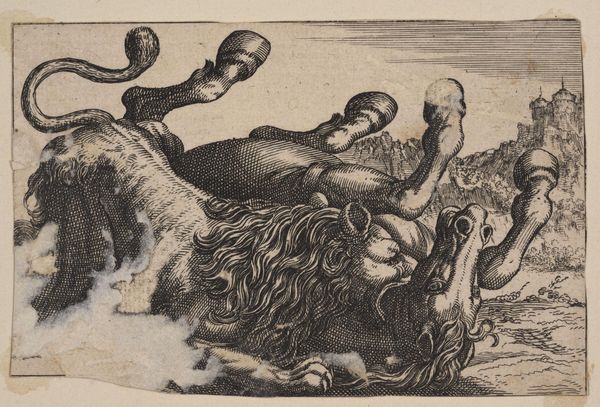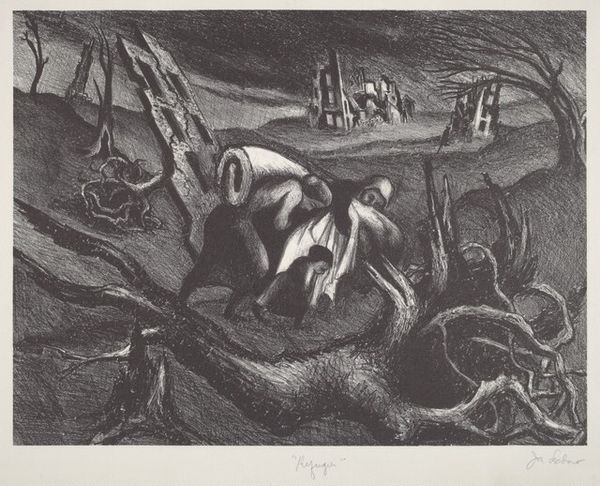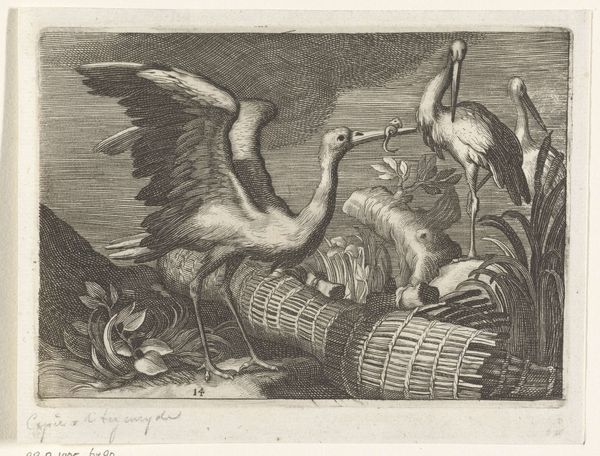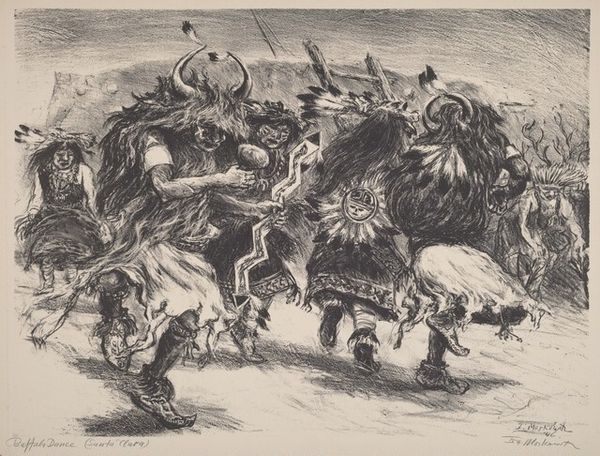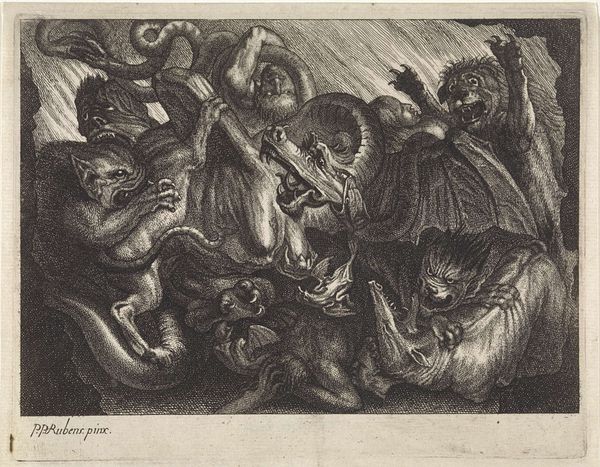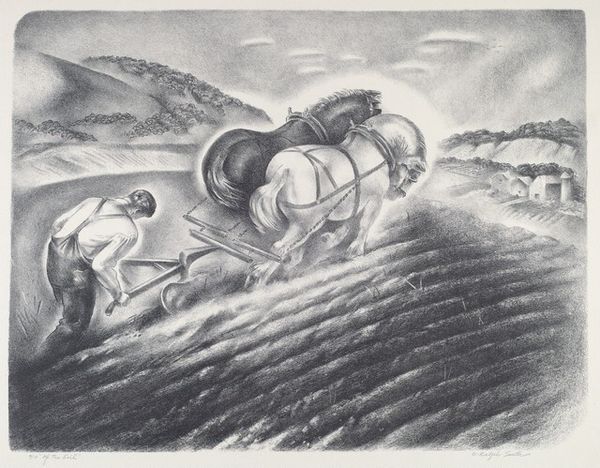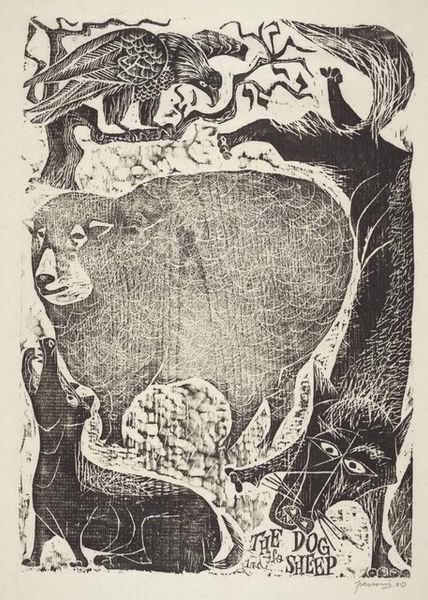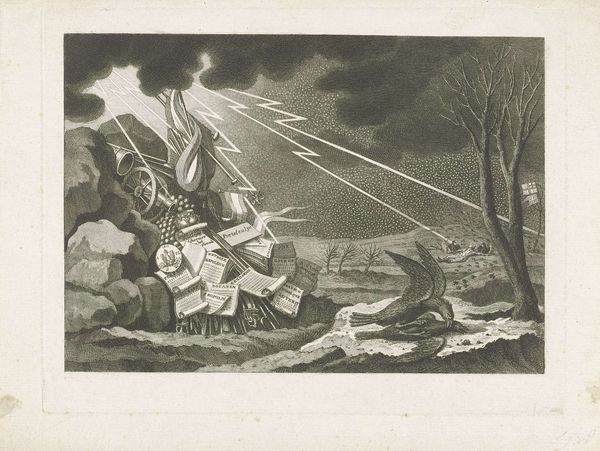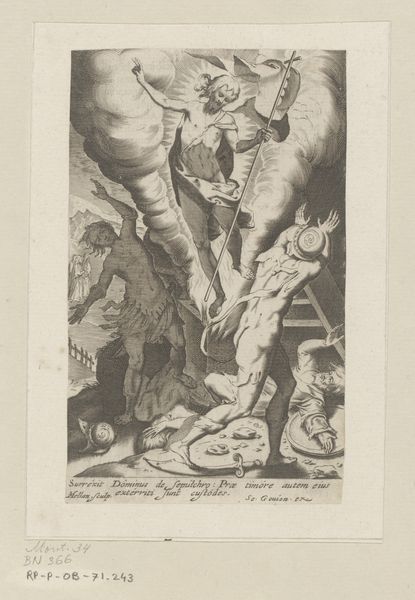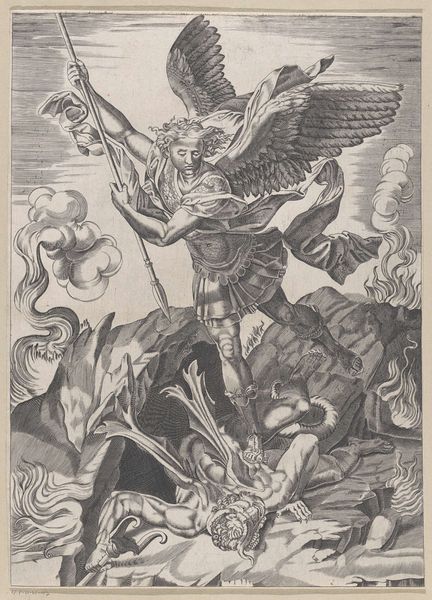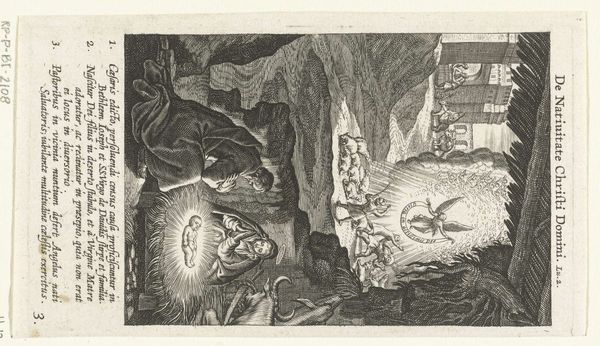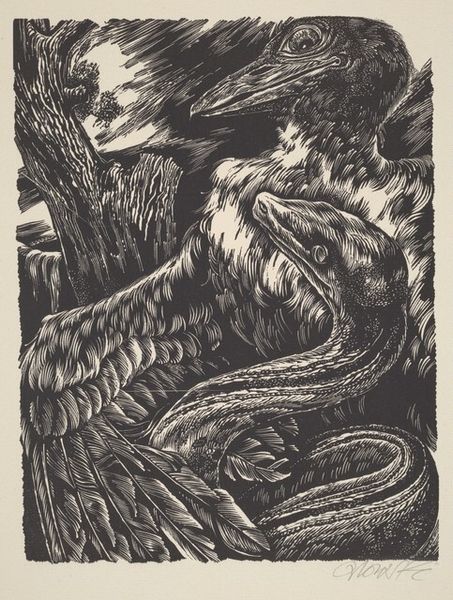
Dimensions: image: 225 x 326 mm sheet: 315 x 422 mm
Copyright: National Gallery of Art: CC0 1.0
Curator: I’m immediately struck by the frantic energy in this print, this woodcut from Henry Simon completed around 1942-43. It feels chaotic and urgent, all sharp angles and clashing forms. Editor: Indeed, this work, titled "The War Makers Ride Under One Banner," clearly aligns with Expressionist visual language popular at the time. Tell me more. Curator: Simon's stark use of black and white emphasizes the aggressive figures on horseback. We see three figures beneath a banner displaying a swastika, referencing, of course, Nazi Germany and its allies during the Second World War. The riders, each bearing different symbolic weaponry, seem to represent aspects of authoritarian power. Editor: I’d say the historical context is critical here. Simon created this as propaganda. His bold, somewhat crude, rendering intensifies the anti-fascist message. Consider the use of the horse motif. Equestrian statues were typical propaganda statements, frequently monumentalizing generals and nationalistic themes. Simon’s appropriation cleverly inverts this heroic symbolism. Curator: Precisely. One figure carries what appear to be bound fasces—a Roman symbol adopted by Mussolini. Another wields a sword. The first one, with the rolled-up tent or blanket, seems to stand for forced migration, a human cost of war and conquest. Note how Simon employs distortion. These aren’t idealized warriors, they're monstrous, deformed figures fueled by ideology. Editor: The swirling lines evoke turbulence and instability. Also note the banner dominating the visual space; it signals the unifying—and oppressive—ideology driving these figures forward. A kind of cultural glue based on shared animosity, not a genuine societal impulse. It is visually striking. What feelings, do you think, did Simon intend to provoke? Curator: Unease, certainly, fear, recognition. I think he wants us to understand how recognizable are the symbols and motivations for war. How potent a symbol, co-opted and deployed. The cultural memory, even manipulated, serves as a constant reminder of shared values. Editor: A warning then, vividly etched for a purpose, making the political personal and immediate through this brutal but effective style. Thanks to Simon’s approach and visual skill, this work has lasting, perhaps disturbingly continuous, relevance. Curator: I agree. It serves as a powerful indictment of the seductive nature of authoritarianism and its brutal consequences.
Comments
No comments
Be the first to comment and join the conversation on the ultimate creative platform.
